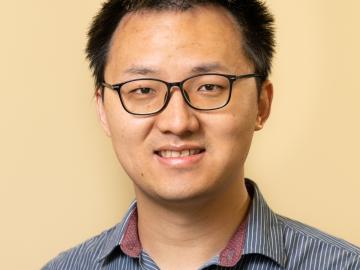
Filter News
Area of Research
- Advanced Manufacturing (3)
- Biological Systems (1)
- Biology and Environment (29)
- Building Technologies (3)
- Clean Energy (125)
- Computational Biology (2)
- Computational Engineering (1)
- Computer Science (2)
- Electricity and Smart Grid (1)
- Functional Materials for Energy (1)
- Fusion and Fission (28)
- Fusion Energy (15)
- Isotopes (7)
- Materials (64)
- Materials for Computing (12)
- National Security (18)
- Neutron Science (103)
- Nuclear Science and Technology (15)
- Sensors and Controls (1)
- Supercomputing (70)
- Transportation Systems (2)
News Topics
- (-) Biomedical (61)
- (-) Buildings (67)
- (-) Fusion (58)
- (-) Neutron Science (137)
- (-) Security (25)
- (-) Summit (59)
- (-) Transportation (99)
- 3-D Printing/Advanced Manufacturing (128)
- Advanced Reactors (34)
- Artificial Intelligence (101)
- Big Data (61)
- Bioenergy (92)
- Biology (101)
- Biotechnology (24)
- Chemical Sciences (73)
- Clean Water (31)
- Climate Change (106)
- Composites (30)
- Computer Science (198)
- Coronavirus (46)
- Critical Materials (29)
- Cybersecurity (35)
- Decarbonization (85)
- Education (5)
- Element Discovery (1)
- Emergency (2)
- Energy Storage (112)
- Environment (201)
- Exascale Computing (42)
- Fossil Energy (6)
- Frontier (45)
- Grid (66)
- High-Performance Computing (93)
- Hydropower (11)
- Irradiation (3)
- Isotopes (57)
- ITER (7)
- Machine Learning (51)
- Materials (147)
- Materials Science (146)
- Mathematics (10)
- Mercury (12)
- Microelectronics (4)
- Microscopy (51)
- Molten Salt (9)
- Nanotechnology (60)
- National Security (73)
- Net Zero (14)
- Nuclear Energy (111)
- Partnerships (51)
- Physics (64)
- Polymers (33)
- Quantum Computing (37)
- Quantum Science (72)
- Renewable Energy (2)
- Simulation (52)
- Software (1)
- Space Exploration (25)
- Statistics (3)
- Sustainable Energy (130)
- Transformational Challenge Reactor (7)
Media Contacts

In May, the Department of Energy’s Oak Ridge and Brookhaven national laboratories co-hosted the 15th annual International Particle Accelerator Conference, or IPAC, at the Music City Center in Nashville, Tennessee.

Researchers at ORNL have successfully demonstrated the first 270-kW wireless power transfer to a light-duty electric vehicle. The demonstration used a Porsche Taycan and was conducted in collaboration with Volkswagen Group of America using the ORNL-developed polyphase wireless charging system.

Researchers at Oak Ridge National Laboratory have developed free data sets to estimate how much energy any building in the contiguous U.S. will use in 2100. These data sets provide planners a way to anticipate future energy needs as the climate changes.

Jinghui Yuan, an R&D staff member in the Applied Research for Mobility Systems group at the Department of Energy’s Oak Ridge National Laboratory, has been elevated to a senior member of the Institute of Electrical and Electronics Engineers.

Building innovations from ORNL will be on display in Washington, D.C. on the National Mall June 7 to June 9, 2024, during the U.S. Department of Housing and Urban Development’s Innovation Housing Showcase. For the first time, ORNL’s real-time building evaluator was demonstrated outside of a laboratory setting and deployed for building construction.

Robert Wagner, associate laboratory director for ORNL's Energy Science and Technology Directorate, has been selected to receive the George Westinghouse Gold Medal from the American Society of Mechanical Engineers, or ASME. The award recognizes his work to advance state-of-the-art clean power generation systems through research on combustion, fuel technologies and controls.

A technology developed by Oak Ridge National Laboratory works to keep food refrigerated with phase change materials, or PCMs, while reducing carbon emissions by 30%.

Researchers set a new benchmark for future experiments making materials in space rather than for space. They discovered that many kinds of glass have similar atomic structure and arrangements and can successfully be made in space. Scientists from nine institutions in government, academia and industry participated in this 5-year study.

Mohamad Zineddin hopes to establish an interdisciplinary center of excellence for nuclear security at ORNL, combining critical infrastructure assessment and protection, risk mitigation, leadership in nuclear security, education and training, nuclear security culture and resilience strategies and techniques.

Howard Wilson explores how to accelerate the delivery of fusion energy as Fusion Pilot Plant R&D lead at ORNL. Wilson envisions a fusion hub with ORNL at the center, bringing together the lab's unique expertise and capabilities with domestic and international partnerships to realize the potential of fusion energy.


